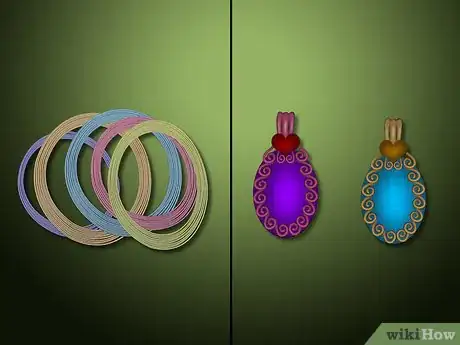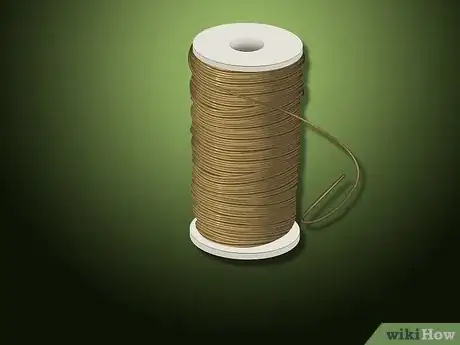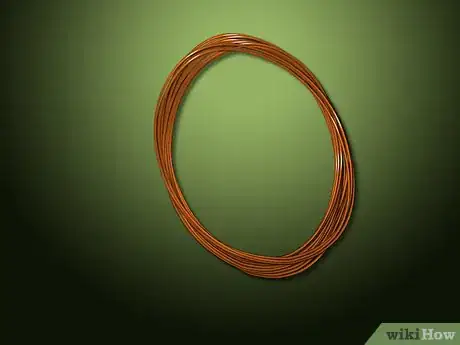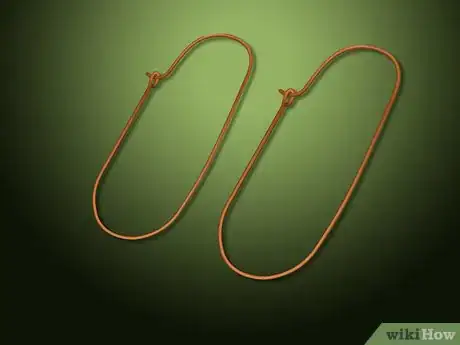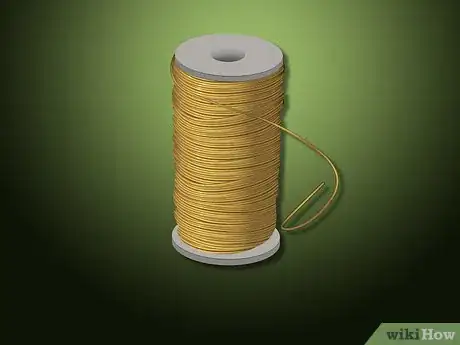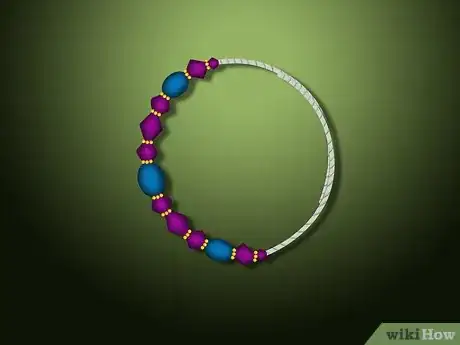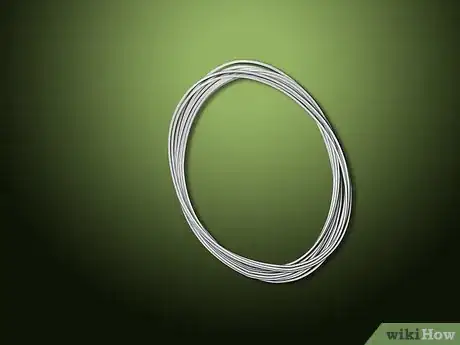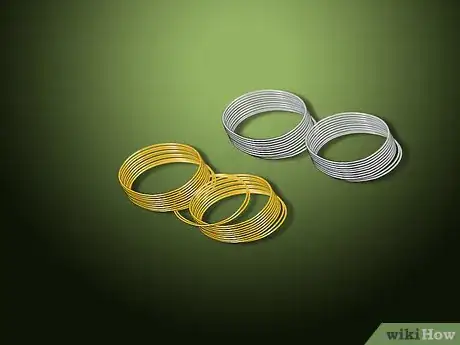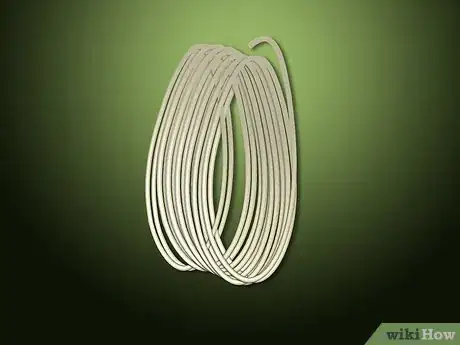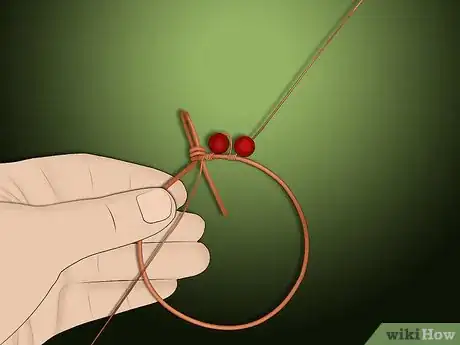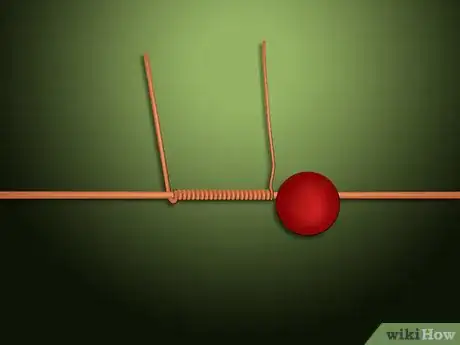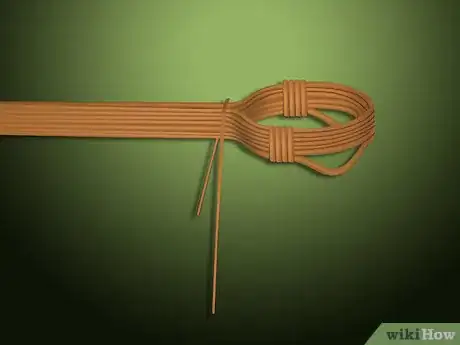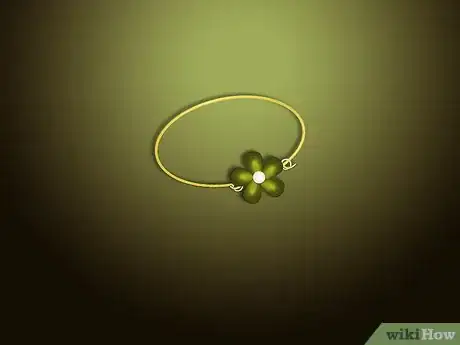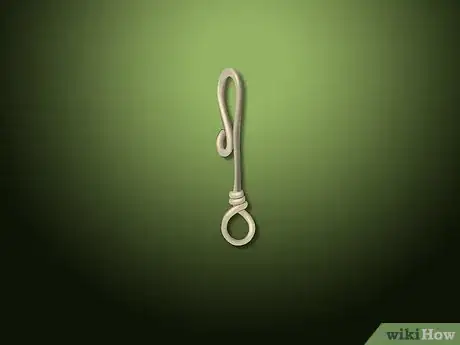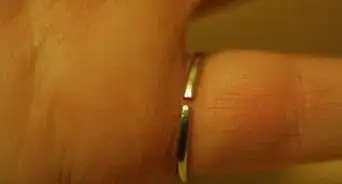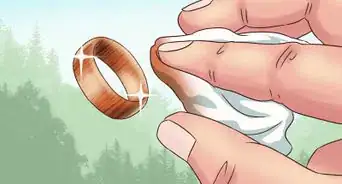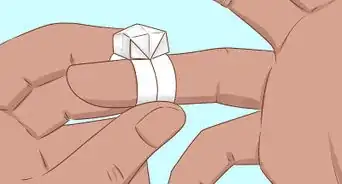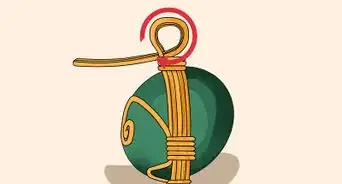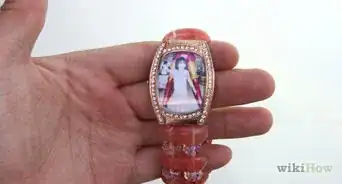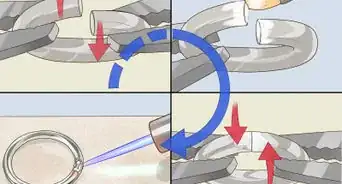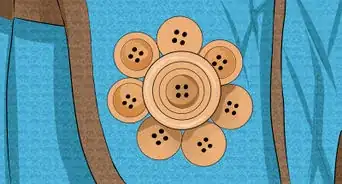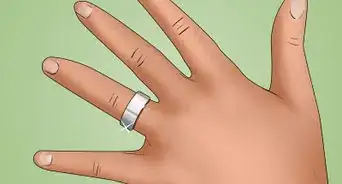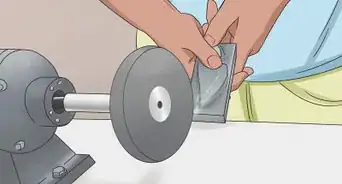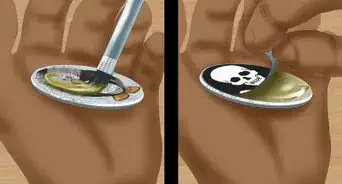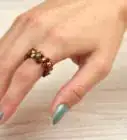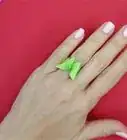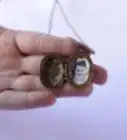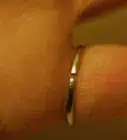This article was co-authored by wikiHow Staff. Our trained team of editors and researchers validate articles for accuracy and comprehensiveness. wikiHow's Content Management Team carefully monitors the work from our editorial staff to ensure that each article is backed by trusted research and meets our high quality standards.
wikiHow marks an article as reader-approved once it receives enough positive feedback. This article received 12 testimonials and 89% of readers who voted found it helpful, earning it our reader-approved status.
This article has been viewed 235,798 times.
Learn more...
Proficient jewelry making requires the use of wire and a number of tools, along with materials like beads, glass, clasps and more. The wire used for jewelry making is created in a number of materials and sizes. There are two important aspects about wire that you need to know before choosing wire for jewelry; They are wire gauge and wire hardness. In general, wire gauge simply refers to how thick the wire is, and the wire is thicker as the number is smaller. And of course, Hardness means how hard the wire is, it mainly includes full hard, half hard and dead soft. Depending upon the material type and size, you can choose wire for different jewelry projects. If you need to decipher what jewelry wire to buy for your next project, then read on to find out how to choose wire for jewelry.
Steps
-
1Choose your project. Different jewelry projects require different wire, so choose wire anew each time you begin a new type of wire jewelry creation.
-
2Choose what material you want to use. Wire comes in aluminum, iron, copper wire, craft, colored, French wire, gold-filled, memory wire, sterling silver wire, silver plated and tiger tail. The price largely depends upon the material used to make the wire.
- Tiger tail wire is a very common wire in jewelry making. It is a braided stainless steel wire that is coated in nylon. It is very strong and comes in a number of colors. It cannot be used for wire wrapping, but it can be used to give the look of an "invisible" setting, where the beads look like they are floating.[1]
- Other standard, inexpensive choices for skilled jewelry making are copper, aluminum and niobium. Copper wire comes in gold and silver colors and it is coated with enamel. Color coated aluminum wire comes in many colors and gauges and often has the color inside the wire, so you don't have to be as careful when working with tools. Niobium is light, comes in many colors and is not delicate.
- French wire is a coiled wire that is great for accenting jewelry. It comes in copper, gold-plated, silver-plated, sterling silver and vermeil. The smaller the coil, the more precious the metal, and the more expensive.[2]
- Gold filled wire has 100 times more gold in it than gold-plated wire. It comes in dead soft, half-hard and full-hard, which is a scale from very delicate to extremely tough. This is an expensive wire, so it should probably be saved for special projects.[3]
- Memory wire is made from carbon steel or stainless steel. It is great for bangles or other loops because it returns to the loop it was made into in the factory. It cannot be used for any projects that require wrapping.[4]
- Sterling silver also comes in the strength scale of dead soft, half-hard and full-hard,
- Gold and silver-plated wires are great for creating a fancy look, but they can be easily ruined by tools.
Advertisement -
3Choose the size of wire you want to use for your project.
- Use 30-gauge or 28-gauge (0.25 to 0.32 mm) wire for delicate jewelry making. It is great for wire weaving, rings, bead work and making small chains. Use fine jewelry making tools for this gauge.
- Use 26-gauge (0.40 mm) to wrap beads and make smaller chain loops. This is the beginning of the finer gauges of wire. Also use fine tools with this gauge.
- Use 24-gauge (0.51 mm) wire for most beading projects. The gauge fits through most beads but isn't too bulky. It has a tendency to get kinks so you may need to buy a wire-straightening tool.
- Use 22-gauge (0.64 mm) wire for stone settings, earrings and pendants. It is a medium-gauge wire, which is commonly found in a number of materials and colors.
- Use 20 to 18-gauge (0.81 to 1 mm) wire for average clasps, jump rings and pins. This medium gauge wire can also be used for thicker chains or for stringing glass beads.
- Use 16 to 14-gauge (1.3 to 1.6 mm) wire, best used for large, heavy jewelry construction. If you use heavy beads or you are experimenting, this thick wire will make a statement. You can also use it for napkin rings or lampshade forms.
Community Q&A
-
QuestionWhat's a good material for ring making?
 Community AnswerA really good material is pure sterling silver wire. Choose the width and thickness of the wire depending on personal preference.
Community AnswerA really good material is pure sterling silver wire. Choose the width and thickness of the wire depending on personal preference. -
QuestionI'm currently working on a project where I need to bend the wire and have the wire remain in that shape with a small amount of give. Should I use the 16- or the 14-gauge wire?
 Community AnswerIf you're using silver wire (sterling, or "ss"), use the half-hard. It will be easy enough to work with, yet not pull out of shape. Avoid craft wire -- it would be too soft.
Community AnswerIf you're using silver wire (sterling, or "ss"), use the half-hard. It will be easy enough to work with, yet not pull out of shape. Avoid craft wire -- it would be too soft. -
QuestionWhat's a good wire for beaded bouquets?
 Community AnswerThin copper wire works great for this.
Community AnswerThin copper wire works great for this.
